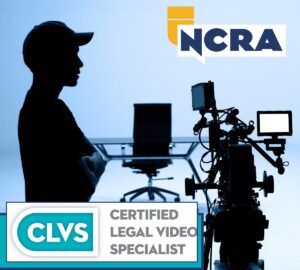By Kathy Cortopassi
The worst fear, believe it or not, was the first time I ever captioned the Business Meeting for the NCRA Annual Convention. Not captioning the speeches of the President of the United States. Not captioning any live U.S. Senate or House speeches. Not providing CART for hundreds or thousands of people for hundreds of events over these 30+ years I’ve been doing this job.
The NCRA. My peers. Fellow captioners. Fellow realtimers. Fellow CART providers. People who could “read through” my mistakes. People who could understand when I fingerspelled or when I had a phrase pop up (Oh, she must have a brief for that!), people who would be “air steno’g” what I was writing, people who would be able to tell how fast/slow the speakers were speaking.
But I prepped. And prepped. And prepped some more.
I had Pat Graves by my side to help point out people or names or slip me her own brief for something.
So I began writing. Nervous as all get out, but I began. I got into a rhythm.
As I always do, I “zone in” on the speaker at the time. And hence comes my Lesson #1 for others on overcoming their fear. Think of yourself as a camera. “Zoom in” to the speaker. When a camera zooms in, it “blocks out” much of what is in the room, in the area, around the subject and brings the focal point closer into view. Zoom in to the speaker’s mouth. “Focus” (another photography term) on what’s being spoken and “blur out” any extraneous thoughts or movements around you and the subject. Anticipate what will be said next and be ready for it. The phrase, “Do I have a motion?” would probably be followed by “Yes. Motion by ____.”
So, back to the NCRA Business Meeting. Lesson #2. Imagine yourself in a war zone. You are a soldier with a rifle. You are in your “zone.” Call that zone your “groove,” a safe spot where you are comfortable, sheltered, protected from attack. Soldiers may be in a trench. Prepare that trench ahead of time. Align yourself where you can see and hear the best and see all parties necessary. Get as comfortable a chair as possible and set your prep and gear where you need it. For me, I’m blind in my right eye, so all prep is to my left. All liquids are in cups — with lids — to my left. I think we can all relate to the reason for the lids! But pens, markers, and protein snacks would be to my right since I’m right-handed. When you’re comfortable and prepared, it is easier to get into your groove and out of the Fear Zone, to relax and do the job you are trained for and that you prepped for.
Was I still scared? Of course! But how did I overcome this, my greatest fear? NCRA members themselves. When they started shouting from the audience, “Slow down! You’re going too fast!”, I knew they had my back. They were helping me. They were encouraging me. They wanted me to do a good job and to have an easier time doing it!
The funny thing is it seemed fast to them, but I was not struggling at all or felt they were going fast at all. Captioners can attest to this. We write at such high speeds for such long periods of time that it becomes natural for us. We don’t even notice that it’s 280 or 300 words per minute. We just do our job. We listen. We write what we hear. Rinse, repeat.
When I knew they “had my back”, I could feel the stress level go down. I had been tensing my neck, shoulders, and jaw. I was able to take a deep, cleansing breath and smile, inwardly and outwardly. Knowing me, I probably teared up (like I’m doing now as I write this) knowing that they cared about me.
So, I survived it and evn went on to caption/CART other NCRA events. Do they still scare me to that same level? No. Now I go into them knowing that my audience – my peers, my friends, my cheerleaders! – will have my back again. But it doesn’t mean I don’t prep like crazy, make lists and briefs, prepare my trench, get into my groove, zoom in on my speakers and focus on the words and their mouths, and blur out the distractions. It doesn’t mean I don’t tense up and need to remind myself to relax and breathe. But my NCRA peeps helped me through my most fear-filled captioning event ever, and this is only one of the thousands of reasons I love NCRA and my NCRA peeps. So if I get asked again to caption anything for NCRA, if I’m still alive and able to, my answer will be yes!
Kathy A. Cortopassi, RPR, RMR, CRR, CCP, CBC, who has also earned NCRA’s Realtime Systems Administrator, is president of Voice to Print Captioning and QualCap. She is based in Crown Point, Ind., and can be reached at Kathycort@voicetoprint.onmicrosoft.com.



